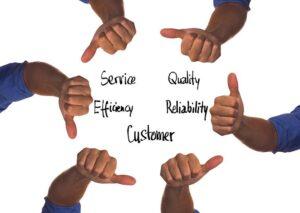 Streamline Workflows: How To Use Processes To Improve Efficiency
Streamline Workflows: How To Use Processes To Improve Efficiency
Are you looking for ways to improve efficiency of your processes and workflows? Do you want to streamline your processes and maximise productivity? We will take a look at how to use processes to improve workflow efficiency.
We will cover topics such as monday.com project management software, understanding workflows, defining your processes, streamlining workflows, automating your process, monitoring and measuring results and more to hugely improve efficiency.
By following these tips and tricks you can achieve greater efficiency in your business operations. Read on for more information!
Introduction to improve efficiency
In today’s working world, time is a precious commodity. Everyone wants to do more with less. An effective way of making sure that this goal is realised is by streamlining your workflows to improve efficiency.
By utilising processes, you can save time and resources while improving efficiency. We’ll look at how you can use processes to maximise productivity in your organization.
We’ll discuss different strategies and tips for creating an efficient process and implementing it successfully throughout your business.
Understanding Improving Efficiency with Workflows
Understanding workflows is key to improving efficiency within an organisation. Workflows are designed to be a visual representation of the steps needed to complete any task or process.
By understanding each step and how it relates to the others, teams can create a sequence of processes that are easy to follow and ensure that every task is completed in an efficient and productive manner.
A well-designed workflow also allows for feedback from team members, ensuring that problems can be addressed quickly and results are tracked properly. Understanding workflows is essential for creating an effective system for streamlining your workflow.
Defining Your Processes to Improve Efficiency
 Setting up processes can be a great way to streamline your workflow, allowing you to get more done in less time. When defining your processes it’s important to map out each step and assign roles and responsibilities.
Setting up processes can be a great way to streamline your workflow, allowing you to get more done in less time. When defining your processes it’s important to map out each step and assign roles and responsibilities.
Think about how these tasks will align with other members of your team. Finally, make sure to document the process so everyone is aware of changes and new procedures.
Once you have all steps laid out, take the time to review and refine each process to ensure they are efficient and effective.
Having a well-defined process will help keep things organised and running smoothly while achieving maximum efficiency.
Streamlining Your Workflows
Having efficient and effective workflows in place can make a big difference in any organisation. Streamlining your workflows means finding ways to make them as simple, fast, and reliable as possible.
This can include creating standardised processes, eliminating redundancies, automating repetitive tasks, and better organising data. By improving productivity and streamlining your workflows, you’ll be able to increase productivity while reducing wasted time and money.
The end result will be improved efficiency across the entire organisation.
Automating Your Processes to Improve Efficiency
Automating your processes is the perfect way to improving productivity, streamline your workflow, and improve efficiency. Automation can help with tasks like data entry and document sorting, allowing more of your team’s valuable time to be spent on important projects.
Process automation also helps to reduce human errors that can lead to costly mistakes. Process optimisation can help ensure all your tasks are done quickly and accurately, every single time.
With efficient process automation in place, you’ll have more time to focus on the big picture and growth opportunities for your business or organisation.
Monitoring And Measuring Results
Monitoring and measuring results is an important part of implementing any workflow. Without tracking performance, it’s impossible to know whether or not a process is working as intended. By establishing key performance indicators (KPIs) for each step in your workflow, you can quickly identify areas of improvement and make adjustments accordingly.
Furthermore, strong data analysis provides feedback that can be used to continuously refine and optimise the workflow. Taking the time to accurately track and measure results can provide invaluable insights into how efficiently process optimisation activities are being carried out—helping your team be more effective and improving productivity in the long run.
Improve Efficiency: Our Conclusion
In conclusion, utilizing processes to streamline your workflow can be a powerful tool for improving efficiency and increasing productivity. By developing processes that are tailored to fit the specific needs of your business, you can get more tasks done in a shorter period of time, allowing you more time to focus on other aspects of your business.
Furthermore, having well-defined process optimisation will help ensure consistency and accuracy in your work, resulting in higher quality output. With the right combination of processes and people, you’ll be able to unlock new potentials for greater efficiency and improving productivity in process-driven businesses.



